Global Market Comments
September 14, 2020
Fiat Lux
Featured Trade:
(MARKET OUTLOOK FOR THE WEEK AHEAD, or THE 200-DAYS ARE IN PLAY),
($INDU), (SPX), (SPY), (AAPL), (AMZN),
(JPM), (C), (BAC), (GLD), (TLT), (TSLA)

Global Market Comments
September 14, 2020
Fiat Lux
Featured Trade:
(MARKET OUTLOOK FOR THE WEEK AHEAD, or THE 200-DAYS ARE IN PLAY),
($INDU), (SPX), (SPY), (AAPL), (AMZN),
(JPM), (C), (BAC), (GLD), (TLT), (TSLA)

Global Market Comments
September 11, 2020
Fiat Lux
Featured Trade:
(WHY SOLID-STATE BATTERIES ARE THE “NEXT BIG THING”)
(TSLA)

Global Market Comments
September 20, 2020
Fiat Lux
SPECIAL EARLY RETIREMENT ISSUE
Featured Trade:
(HOW TO JOIN THE EARLY RETIREMENT STAMPEDE)

Global Market Comments
September 9, 2020
Fiat Lux
Featured Trade:

Global Market Comments
September 8, 2020
Fiat Lux
Featured Trade:

This isn’t the “Big One.”
This isn’t even a Middle One.”
This is no more than a 10%-15% correction typical for long term bull markets.
Sure, we saw every technical indicator known to man scream “SELL” in the run-up to the recent market top. There were other factors at play as well.
The bulk of the buying focused on only the top six stocks, more concentrated than seen during the Dotcom Bubble Top in 2000.
There really was only one buyer. That would be my friend Masayoshi Son’s Softbank (SFTBY). He bought $4 billion worth of big tech call options in the run-up to the top with an exercise value of $30 billion. When he started to sell last Monday, the market for these options vaporized and stocks plunged.
The fact that both Apple (AAPL) and Tesla (TSLA) shares split the same day also defined a market top that I have been warning readers about for weeks.
This is all in the face of the incredible reality that 50% of all S&P 500 (SPY) stocks are down over the past two years. It really has been a stock picker’s market with a turbocharger.
And this isn’t just any old bull market. We are in fact 11 ½ years into a bull market that started in March 2009 that has another decade to run. We have completed the first 400% gain. What lies ahead of us is another stock market increase of 400%, taking us up to 120,000 in the Dow Average by 2030.
And this is a bull market that has suffered plenty of 10%-15% corrections since its inception. The one that began in Thursday is no different. The sole exception to this analysis was the COVID-19-induced 37% meltdown that began in February. That little event only lasted six weeks.
For you see, the fundamentals have not changed one iota. No, I’m not talking about earnings, valuations, or sales growth. That is so 20th century.
No, I’m referring to the only fundamental that counts in the 21st century: Liquidity.
And liquidity isn’t shrinking, it is in fact increasing. That includes the unprecedented expansion of quantitative easing by the Federal Reserve, massive deficit spending by the US government, and zero interest rates, which Fed governor Jay Powell has promised us will continue for another five years.
During the last Dotcom Bubble top, the FAANGs and Tesla (TSLA) did not even exist. Apple was just coming out of its flirtation with bankruptcy and Amazon (AMZN) had just barely gone public. Google (GOOGL) and Facebook (FB) were still but glimmers in their founders’ eyes.
Except now we have a new bullish fundamental to discount: a Biden win in November. Since Biden decisively pulled ahead in the polls in May, the stock market has risen almost every day. He is 4%-10% ahead in every battleground state poll.
Even if Trump were to win every red and red-leaning state accounting for 163 electoral college votes, plus all 63 votes from toss-up states (AZ, NC, IA, FL, GA, OH), he would still lose the election, where 270 votes are needed to win. Just THAT is a 1:100 event, on the scale of Harry Truman’s historic 1948 compact, and Trump is no Harry Truman.
So what of Biden wins?
You can count on the $3 trillion stimulus bill passed by the House in March to go through, which primarily allocates money to keep states and local municipalities from firing policemen, firemen, and teachers.
Next to come are another $3 trillion in infrastructure spending. And I absolutely know from past experience that markets love this kind of stuff. It enhanced liquidity even more.
As I say, cash is still trash, and it may remain so for years.
The Top is in, with a horrific two-day 1,500-point selloff in the Dow Average ($INDU) coming out of the blue on no news and signaling the end of the current rally. Whatever went up the most is now going down the most as the Robinhood traders flee in panic. This was long overdue. Margin calls are running rampant.
Volatility (VIX) soared to $38, up 70% in two days, meaning that we may be close to the end of this correction. The (SPX) is down 24 points, 6.7% from the Wednesday high. The last (VIX) peak was at $44 in June and $80 in March. Time to start buying stocks for a yearend rally? Look at the banks.
Was Apple (AAPL) really up 400%? Did Tesla gain 500%? You might be fooled if you didn’t know that these stocks just split, Apple at 4:1 and Tesla for 5:1. In fact, both stocks posted robust gains in real terms, Apple up 5% and Tesla up 10%. Tesla just hit my five-year split-adjusted target of $2,500. Every other analyst had a much lower target or were bearish. Time to run a mile as splits often herald intermediate market tops.
Apple hit a $2.3 trillion in market cap at the peak, up a staggering $300 billion in days. We are truly in La La Land here. The price-earnings multiple has soared from 9X to 40X. That 5G iPhone better deliver. Didn’t you hear that 5G was causing Coronavirus, a popular internet conspiracy theory?
The Dow Average just lost its Apple turbocharger. Some 1,000 of the 2,000 points the Dow Average gained in August were due to Apple alone. With the Dow rebalancing today, with (XOM), (PFE), and (RTX) out and (CRM), (AMGN), and (HON) in, Apple’s influence has been greatly diluted. With the (VIX) back up above $26, the worst is yet to come. The stock market is screaming for a correction.
Copper (FCX) hit a new 3-year high, with demand soaring in China. They were the first to cap Covid-19 and restore their economy. The red metal is a great call on the recovery of the global economy. Those who bought the Freeport McMoRan (FCX) LEAPS I recommended in March are sitting pretty. The shares are up 228% since then.
Tesla to sell $5 billion in stock to finance the construction of new factories in Nevada, TX, and Germany. (TSLA) fell 5% on the news. I had been advising clients to sell all week. It won’t be a conventional secondary stock offering but an effort to sell into every stock spike. More proof that Elon hates Wall Street as if we needed more. With a market cap of $450 billion, investors are finally viewing Tesla as a data company rather than a car company.
US car sales recover to 15.2 million in August on an annualized basis. That brings us almost back to pre-pandemic levels. This is the best indicator yet that the US is returning to a semi-normal economy. Of course, zero interest rates and other unprecedented incentives are a big help.
Consumer Spending popped, up 1.9% in July, which accounts for two-thirds of the US economy. Those who have money are spending like there’s no tomorrow, and with a global pandemic, maybe there won’t be. New car purchases were a big winner as buyers take advantage of 0% financing everywhere.
Weekly Jobless Claims dropped to 880,000, still terrible, but less terrible than last week. California claims have topped 8 million since the pandemic began. Continuing claims drop to 13.3 million, down from the 25 million peak in May.
US Unemployment Rate plunged to 8.4% in August, from 10.2%. The August Nonfarm Payroll report jumps by 1.37 million. It’s a much faster improvement than expected. Retail gained 248,000, Education & Health Services were up 147,000, and Leisure & Hospitality were up 174,000, Government was up 344,000. It’s all thanks to the miracle of government spending. The Dow Average is down 500 points anyway.
China to dump US Treasury bonds in response to Trump's escalating trade war, putting $200 billion in paper up for sale. They hold $1.07 trillion in total and is our largest single creditor. The (TLT) is down two points on the news, where I am running a double short position. Who is going to fund America’s massive borrowing?
When we come out the other side of this, we will be perfectly poised to launch into my new American Golden Age, or the next Roaring Twenties. With interest rates still at zero, oil cheap, there will be no reason not to. The Dow Average will rise by 400% or more in the coming decade. The American coming out the other side of the pandemic will be far more efficient and profitable than the old.
My Global Trading Dispatch bounced back hard with some super aggressive buying of stocks right at the Thursday and Friday market bottoms and selling short of bonds at the top.
By going full speed ahead, damn the torpedoes, I brought in the best two-day return in the 13-year history of the Mad Hedge Fund Trader, up a heroic 8.27%.
It started out as a terrible week, getting flushed out of one of my short positions in the (SPY) for a big loss as the market hit a new all-time high.
Then I got long banks (JPM), Apple (AAPL), Amazon (AMZN), Visa (V), and went triple short bonds (TLT). I still retain one short in the (SPY), which is now profitable. I would have bought Bank of America (BAC) and Citigroup (C), but the market ran away before I could write the trade alerts.
The instant crash was yet another gift. Right after I shorted bonds, the Chinese hinted that they would unload $200 million worth of their US Treasury bond holdings. The harder I work, the luckier I get.
If these positions expire at max profit in eight trading days, I will be back at new all-time highs. Notice that I am shifting my longs away from tech and toward domestic recovery plays.
You only need 50 years of practice to know when to bet the ranch.
That takes our 2020 year to date back up to 30.99%, versus -0.70% for the Dow Average. September stands at 4.44%. That takes my eleven-year average annualized performance back to 36.27%. My 11-year total return returned to 386.90%. My trailing one-year return popped back up to 51.60%.
It is a quiet week as always following the fireworks of the jobs data.
The only numbers that really count for the market are the number of US Coronavirus cases and deaths, which you can find here.
On Monday, September 7, it is Labor Day in the US, and markets are closed.
On Tuesday, September 8 at 10:00 AM EST, the Economic Optimism Index for September is released.
On Wednesday, September 9, at 8:13 AM EST, the EIA Cushing Crude Oil Stocks are out.
On Thursday, September 10 at 8:30 AM EST, the Weekly Jobless Claims are announced. US Core Producer’s Price Index for August is also out.
On Friday, September 4, at 8:30 AM EST, the US Inflation Rate for August is printed. At 2:00 PM The Bakers Hughes Rig Count is released.
As for me, I am headed back to Lake Tahoe to flee the horrific smoke in the San Francisco Bay Area drifting our way from the rampant California wildfires. If people don’t believe in global warming, they should come here where we have it in spades. We’ll even give you some.
At least we’ve been getting spectacular sunsets.
Stay healthy.
John Thomas
CEO & Publisher
The Diary of a Mad Hedge Fund Trader
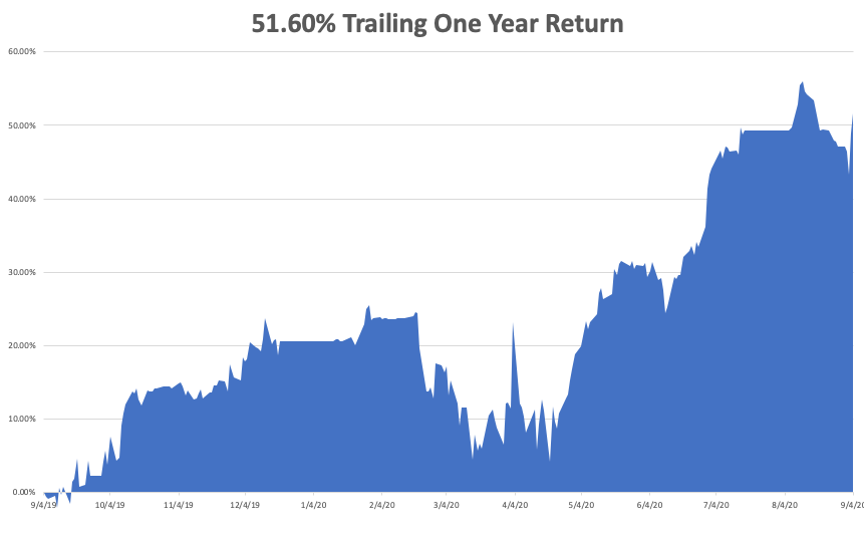

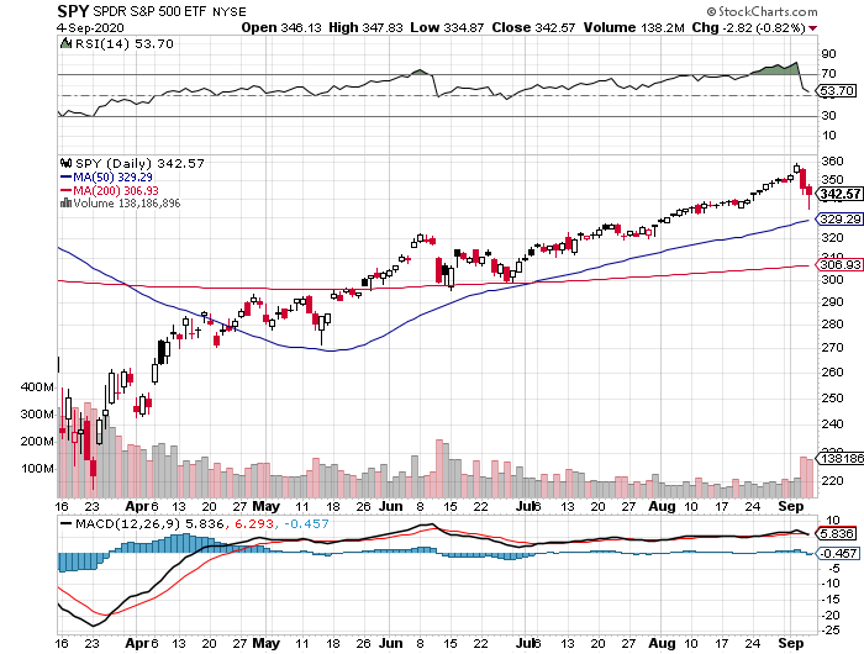
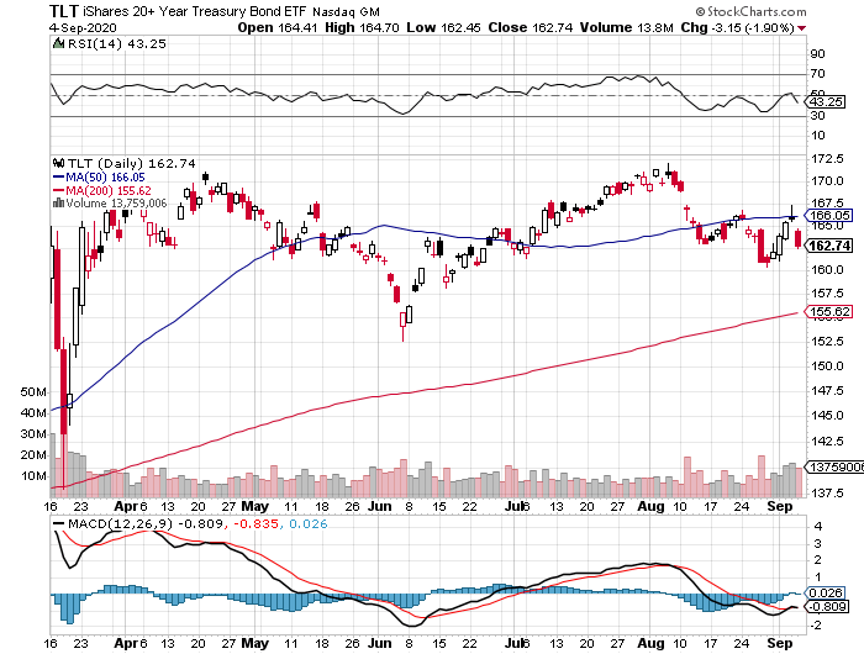

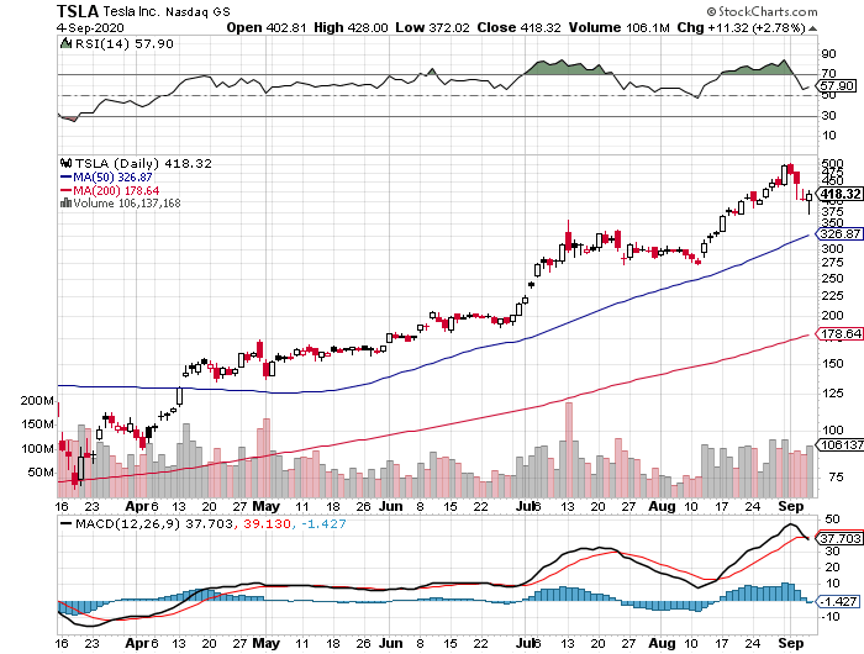


Global Market Comments
September 4, 2020
Fiat Lux
Featured Trade:

Below please find subscribers’ Q&A for the September 2 Mad Hedge Fund Trader Global Strategy Webinar broadcast from Silicon Valley, CA with my guest and co-host Bill Davis of the Mad Day Trader. Keep those questions coming!
Q: Tesla (TSLA) is down 25% today from the Monday high. What are your thoughts?
A: Yes, I've been recommending to people all last week that they dump their big leverage positions, like their one- and two-year LEAPS in Tesla and quite a few people got out at the absolute highs near $2,500 just before the new stock issue was announced. People who bought the Tesla convertible bonds ten years ago got an incredible tenfold return, plus interest!
Q: Are we at-the-money at the bear put spread in (SPY)?
A: Yes, and if we go any higher, you are going to get a stop loss in your inbox because I have good performance this year to protect. I do this automatically without thinking about it. In this kind of crazy market, you cannot run shorts indefinitely. Hope is not a strategy. And it’s easy to stop out of a loser when 90% of the time you know the next one is going to be a winner.
Q: Doesn’t gold (GLD) normally go up in falling stock markets?
A: Yes, in a normal market that’s what it does. The problem is that all asset classes have produced identical charts in the last 2.5 years, and when they all go up in unison, they all go down in unison. This time around, gold will sell off with the stock market and gold miners (GDX) will go down three times as fast. Remember gold miners are stocks first and gold plays second, so when a big stock dive hits, will see big dives in gold miners as well, as we saw in February and March.
Q: Why is JP Morgan (JPM) a good buy?
A: JP Morgan is the quality play in the banks. And once inflation starts to kick in and interest rates rise, and you get a positive yield curve and a strengthening economy—that is fantastic news for banks. They are also one of the few underperforming sectors left in the market, so in any stock market selloff banks will rise. And that’s JP Morgan (JPM), Bank of America (BAC), Citigroup (C) that will lead the charge. Avoid Wells Fargo (WFC). It’s still broken.
Q: I see iPath Series B S&P 500 VIX Short Term Futures ETN (VXX) starting to move up. Should we buy it?
A: Only on dips and only if you expect a dramatic selloff in the stock market very soon, which I do. The (VXX) trade is very high risk. The contango is huge. I tried making money on it a couple of times this year and failed both times; this really is for professional intraday traders in Chicago with an inside look at customer order flows. Retail traders rarely make money on the (VXX) trade—usually, they get killed.
Q: Will gold hold up as interest rates rise?
A: No, it won’t. Rising interest rates are death for gold and other precious metals. Your gold theory is that interest rates stay lower for longer, which the Fed has essentially already promised us.
Q: What do you think of the United States Treasury Bond Fund (TLT)?
A: I’m looking to sell shorts in big size as I did in the spring and I’m looking for five-point rallies to sell into. I missed the last one last week because it just rolled over so fast on an opening gap down that you couldn’t get any trade alerts out, and that’s happening more and more. So, if we get going up to $166-$167, that will be a decent short and then you want to be doing something like the $175-$178 vertical bear put spread in October. I don’t think bonds are going to go to 0% interest rates, I think the real range is 50-95 basis points in a 10-year treasury yield. That is your trading range.
Q: Do you think big oil (USO) will transform into a low carbon energy industry if Biden wins?
A: I’ve been telling big oil that that’s what they’re going to have to do for 20 years. They all read Mad Hedge Fund Trader. And, they always laugh, saying oil will be dominant at least until 2050. Since then, they have become the worst-performing sector of the S&P 500 on a 20-year view, and my thought is that eventually, big oil takes over and buys the entire alternative energy industry, and slowly pulls out of oil. They have the engineering talent to pull it off and they have the cash to make the acquisitions. They will have to reinvent themselves or go out of business, just like everybody else.
Q: What could trigger the stock market pullback you mention in your slides? Because the bullish Fed quantitative easing trade is hard to stop.
A: It’s like the 2000 top, there was no one thing or even a couple things, that could trigger the top. It’s just the sheer weight of prices and exhaustion of new buyers, and that is impossible to see in advance, so all you can do is watch your charts. One down out of the blue the Dow Average ($INDU) will suddenly drop 1,000 points for no reason.
Q: When you say Europe is recovering, which data indicates this?
A: Well, when you look at Q2 GDP growth in Europe, they were only down 10% while the US was down 26%. That is purely a result of Europe having a much more aggressive COVID-19 response than the United States. There is no mask debate in Europe, it’s like 100% compliance. Here you have blue states wearing masks and red states not. The result of that, of course, is that the death rate in the red states is about five times higher than it is in blue states, on a per capita basis. That is why the US has the highest infection rate in the world, the highest death rate, and is why we lost an extra 16% of GDP growth in Q2.
Q: Will you trade a short Tesla again?
A: No, I’ve been hit twice on Tesla shorts in the last six months and we are now in La La land—it’s essentially untradable. I got a lot of people out of Tesla earlier this week, and then they announced their share new $5 billion issue, which they should have done a while ago
Q: Is there any way to play the home mortgage refi boom in the stock market with the 30-year mortgages at a record low 2.88%?
A: You buy the banks. If you call your bank and ask for a refi quote, it might be a week before they get back to you, they are so busy. Banks are also getting enormous subsidies from all these various lending and stimulus type programs, so money is raining down on them right now. Banks are now the cheapest sector in the market, selling at 6x earnings. It is probably the single greatest sector in the stock market right now to buy.
Q: I’ve been holding the ProShares UltraShort 20 year Plus Treasury fund (TBT) and it is moving up and down in the short-range. Should I sell?
A: No, I think we have more room to go on the (TBT), I think we could get to $18, which is about a 0.90% yield in the US Treasury bond market.
Q: Do you have a target on Tesla?
A: Well, my downside target would be its old breakout level. So, divide by five and you get $300. That equates to $1450 in the pre-split price. So, we could have a real monster selloff, like 40%, once this market loses momentum. It’s safe to say don’t buy Tesla up here.
Q: Is the ProShares UltraShort S&P 500 ETF (SDS) offering a good entry point here?
A: It is as soon as we rollover. In these momentum-driven markets, it’s best to wait for proof of a top before you start getting fancy with short plays. You can see how I got hammered several times in the last month by being too early on my shorts; and fortunately, I was able to hedge out most of those losses. You might not be able to do so.
Q: Are you planning on keeping your Fortinet spread?
A: Yes, to expiration, which is only 11 days off, unless we get an out-of-the-blue meltdown.
Q: Do you like Ali Baba (BABA)?
A: Yes; that is essentially a play on a Biden win in the election. If he wins, our war with China will cease and all of the China plays will go ballistic as we return to international trade, which has been powering our economy for the last 70 years.
Q: What about cruise lines like Carnival (CCL)?
A: I know they’re cheap. They’re selling out their 2021 summer cruises with customers betting that there will be a corona vaccine by then, or simply not caring whether there is a pandemic or not. The dedicated cruisers are desperate to cruise. That’s one reason why these stocks are holding up, but I don’t want to touch them. I think the recovery will take much longer than people realize.
Q: When do you buy gold?
A: Wait for a bigger dip.
Q: Should I be holding gold for the long term?
A: Yes; if you don’t want to trade it, just sitting on your position is fine. I think gold eventually goes to 3,000 after hitting an initial target of 2,200.
Good Luck and Stay Healthy
John Thomas
CEO & Publisher
The Diary of a Mad Hedge Fund Trader

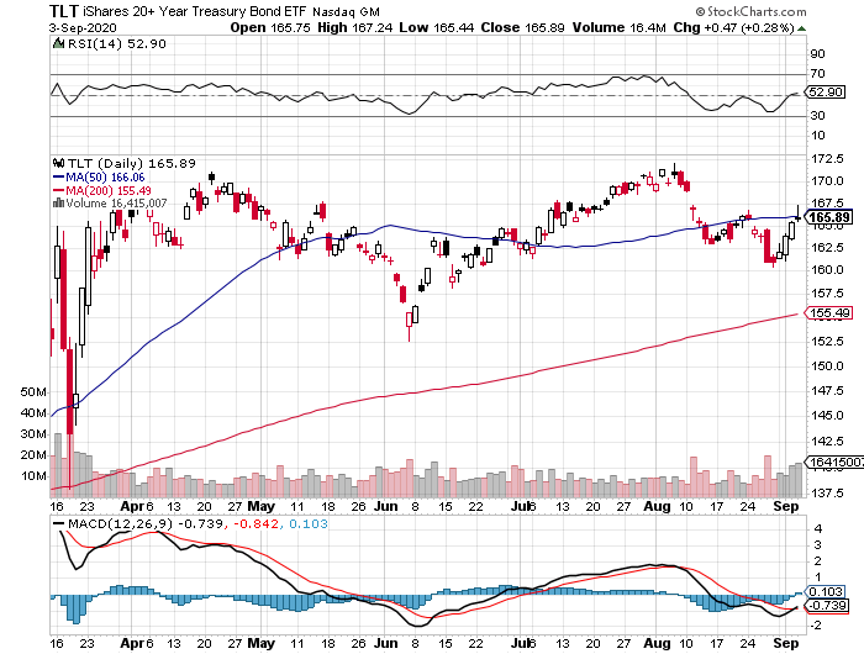
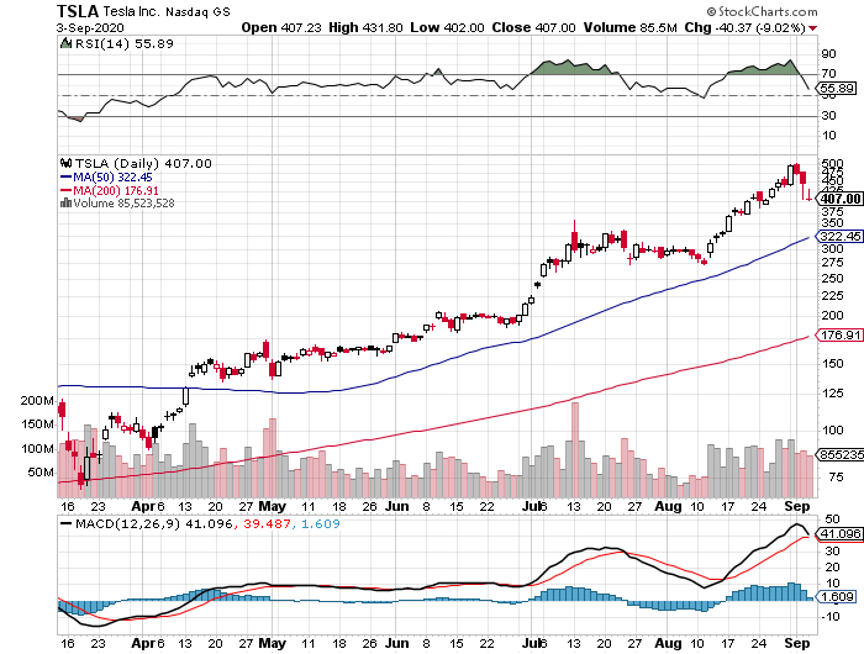

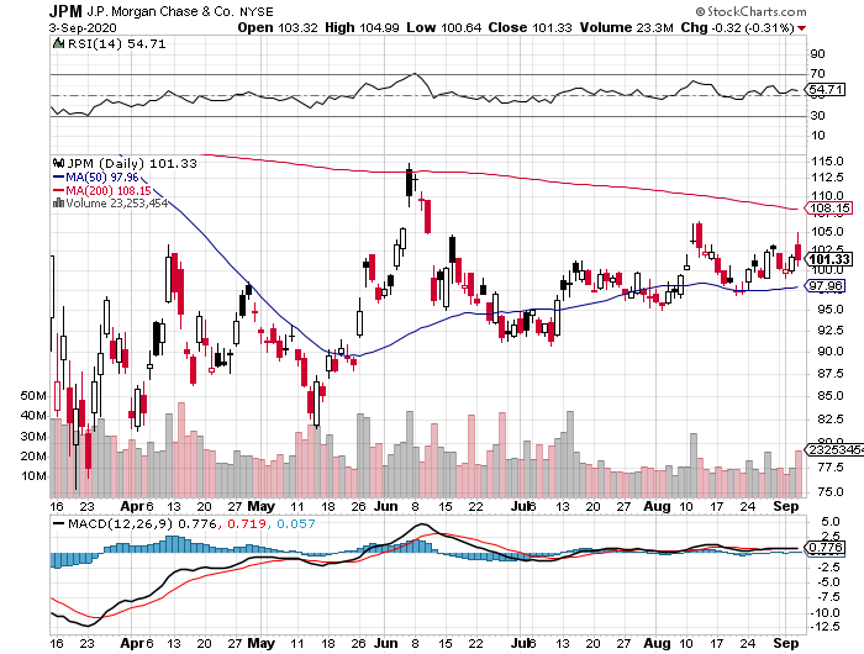

Global Market Comments
September 3, 2020
Fiat Lux
Featured Trade:

I already know what you’re thinking about.
Energy Master Limited Partnerships (MLPs), junk bonds, airlines on the verge of bankruptcy?
Nope.
There are in fact tremendous opportunities in mortgage-backed securities.
Mortgage-backed what, you may ask?
A Mortgage-Backed Security (MBS) is a type of instrument which is secured by a basket of mortgages. These mortgages are aggregated and sold to banks which then securitize, or package, them together into single securities that investors can buy.
MBSs in effect turn banks into middlemen between the individual homeowner and a fixed income end investor. The housing market can’t work without it. The majority of home mortgages in the United States end up in MBS’s one way or the other.
MBS’s are further subdivided into residential or commercial ones, depending on whether the underlying assets are home mortgages taken out by borrowers or assets for commercial purposes ranging from office space to multi-dwelling buildings.
And here’s the part you want to hear. Some MBSs yield as much as 11%, and high single digits are common.
MBSs basically are bonds with a few bells and whistles. They are supposed to trade in line with ten-year US Treasury bonds (TLT). The problem now is that right now they are not. In fact, MBSs are currently trading at the great spread over Treasuries since the 2008-2009 Great Recession.
Part of the problem is that MBSs have a terrible history, leading the charge to the downside when the housing market collapsed, some collateral properties dropping as much as 80%. That took the value of most leveraged MBSs to zero.
Trillions of dollars were lost. Indeed, vast fortunes were made by hedge funds selling short these securities.
Today, these are not your father’s MBSs. In the wake of the 2008-2009 crash, the heavy hand of regulation came down hard.
Today, an MBS must be issued by a government-sponsored enterprise (GSE) or a heavily capitalized private financial company. The mortgages must have originated from a regulated and authorized financial institution. And the MBS must have received one of the top two ratings issued by an accredited credit rating agency.
As a result, much of the risk has been taken out of these securities.
So if these things are so safe now, why are they presenting such astronomical returns? A lot depends on your long term view of these US housing market.
There are currently 4 million homes in mortgage “forbearance” meaning that they have a temporary holiday on making their monthly mortgage payments. This government program runs out at the end of 2020. This has crushed the MBS market.
If you believe that the majority of these homes are going the default on their loans, you probably should steer clear of MBSs as the market has it right.
However, if you think that the majority of these bowers obtained forbearances without actually needing them and will return to regular timely payment once the program ends, plus back payments, then MBSs now offer incredible value and you want to be loading the boat with them.
I believe in the latter.
There happen to be dozens of publicly listed MBSs which you can buy. I focus on a couple of the highest quality ones.
The Janus Henderson Mortgage-Backed Securities ETF (JMBS) is offering a 4.34% yield invests primarily in ten and 30 conventional home mortgages. Click here for more details.
The Franklin Templeton Western Asset Mortgage Back Securities Fund (SGVAX) pays a 3.75% yield and invests in a broader range of asset-backed securities. For more details on this fund please click here.
While these yields are attractive, you really need institutional access to get the Holy Grail, the true double-digit return. That will let you soak up the mortgages directly, as hedge funds do. That will let you bypass the hefty management fees and expenses charged by the exchange-traded funds and other middlemen.
You may also have to go out on the risk spectrum to get the big numbers, which means investing in more commercial backed securities. It’s no great revelation that people will default on their office or their small business before they do so on the residence.
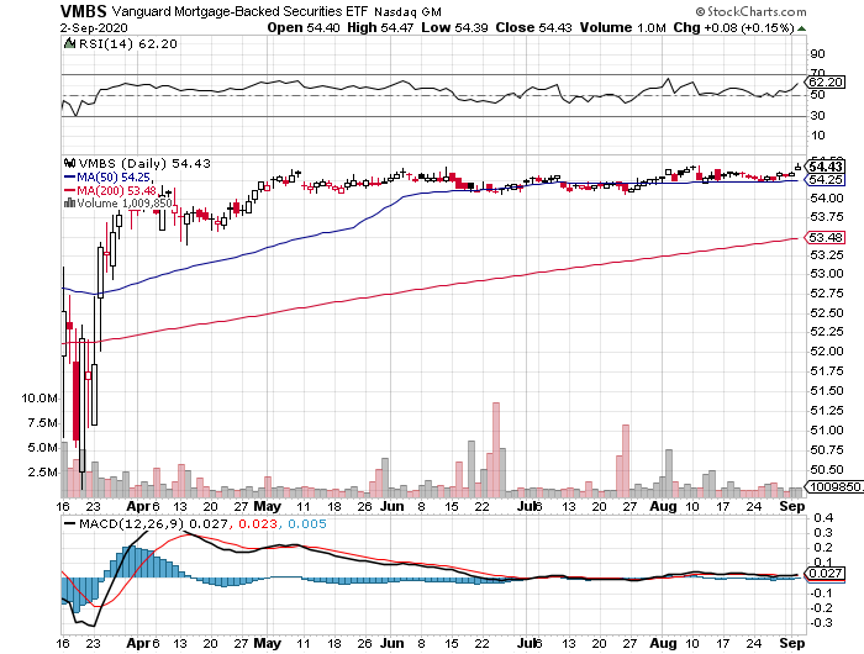
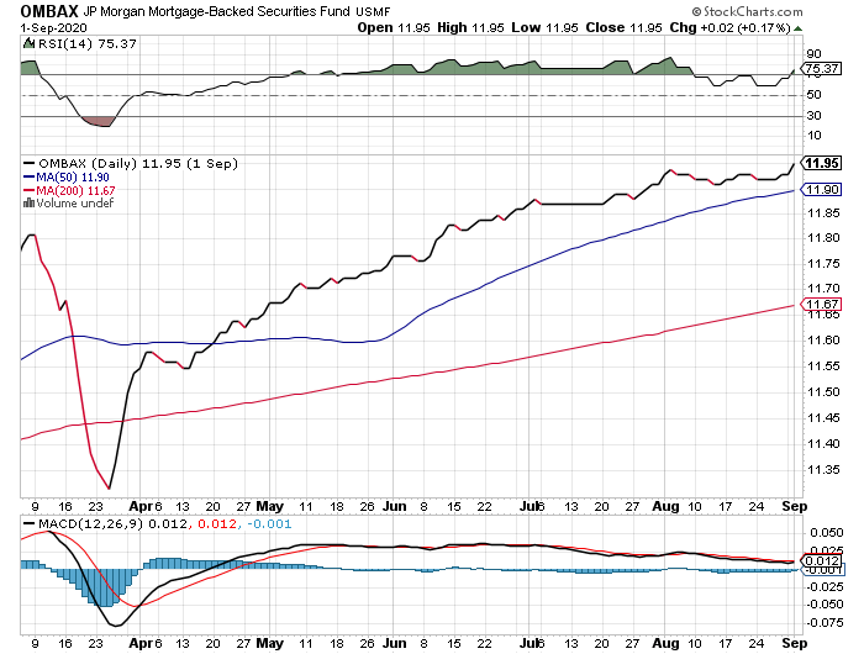

Legal Disclaimer
There is a very high degree of risk involved in trading. Past results are not indicative of future returns. MadHedgeFundTrader.com and all individuals affiliated with this site assume no responsibilities for your trading and investment results. The indicators, strategies, columns, articles and all other features are for educational purposes only and should not be construed as investment advice. Information for futures trading observations are obtained from sources believed to be reliable, but we do not warrant its completeness or accuracy, or warrant any results from the use of the information. Your use of the trading observations is entirely at your own risk and it is your sole responsibility to evaluate the accuracy, completeness and usefulness of the information. You must assess the risk of any trade with your broker and make your own independent decisions regarding any securities mentioned herein. Affiliates of MadHedgeFundTrader.com may have a position or effect transactions in the securities described herein (or options thereon) and/or otherwise employ trading strategies that may be consistent or inconsistent with the provided strategies.
This site uses cookies. By continuing to browse the site, you are agreeing to our use of cookies.
OKLearn moreWe may request cookies to be set on your device. We use cookies to let us know when you visit our websites, how you interact with us, to enrich your user experience, and to customize your relationship with our website.
Click on the different category headings to find out more. You can also change some of your preferences. Note that blocking some types of cookies may impact your experience on our websites and the services we are able to offer.
These cookies are strictly necessary to provide you with services available through our website and to use some of its features.
Because these cookies are strictly necessary to deliver the website, refuseing them will have impact how our site functions. You always can block or delete cookies by changing your browser settings and force blocking all cookies on this website. But this will always prompt you to accept/refuse cookies when revisiting our site.
We fully respect if you want to refuse cookies but to avoid asking you again and again kindly allow us to store a cookie for that. You are free to opt out any time or opt in for other cookies to get a better experience. If you refuse cookies we will remove all set cookies in our domain.
We provide you with a list of stored cookies on your computer in our domain so you can check what we stored. Due to security reasons we are not able to show or modify cookies from other domains. You can check these in your browser security settings.
These cookies collect information that is used either in aggregate form to help us understand how our website is being used or how effective our marketing campaigns are, or to help us customize our website and application for you in order to enhance your experience.
If you do not want that we track your visist to our site you can disable tracking in your browser here:
We also use different external services like Google Webfonts, Google Maps, and external Video providers. Since these providers may collect personal data like your IP address we allow you to block them here. Please be aware that this might heavily reduce the functionality and appearance of our site. Changes will take effect once you reload the page.
Google Webfont Settings:
Google Map Settings:
Vimeo and Youtube video embeds:
